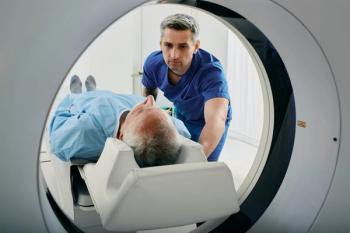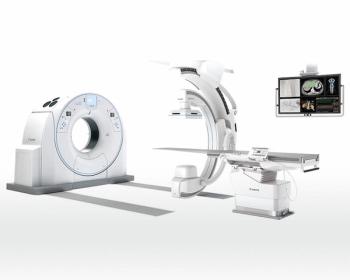
Quality Control in Radiology: Knowing Your (Un)Limit
Rads will always have to deal with forces outside of their control, but it’s how we address those forces that makes us the type of radiologist we can be proud of.
"We're limited." I heard that utterance more than a few times during my fellowship, nearly 2 decades ago. It was often spoken by one of the attendings, when she'd open an imaging study and see it marred by motion artifact, bad contrast-phase, wrong positioning, etc.
She'd say it in a particular tone of voice, a mix of regret and disappointment. Both understandable: Here we were, all set to showcase our diagnostic capabilities, and we'd received crummy tools. We stood to accomplish less for a patient than we otherwise might have.
Still, something about it didn't sit well with me. I can't say exactly when I put my finger on it, but when I did, my sentiment crystallized: “What do you mean, ‘we’?”
I'm far from perfect, radiologically speaking or otherwise. Even having come to understand that I am often my own harshest critic, I know that I have plenty of limitations. Perhaps I could/should have overcome more of them by this point in my life, but I think I can forgive myself for not outrunning Usain Bolt or out-physics-ing Stephen Hawking.
Saddled with all the limitations I've got by virtue of circumstances and being an imperfect mortal, I don't think I need to take ownership of any extra. When it comes to doing the best diagnostic radiology work I possibly can, for instance, I categorically refuse to take an iota of blame when I'm given a lousy case to read.
Sure, my name is going on the report, and whoever reads it—especially hungry ambulance-chasers—might well try to tie the inadequacies of the images to me, personally. Let that be their burden; I won't do anything to make it easier for them. That includes not beating myself up over the matter.
Maybe that sounds callous. Or an abdication of responsibility, if you're of the belief that radiologists have the ability to take corrective action in the name of quality-control. I like to imagine that other rads out there do indeed work in environments where they can identify problems and either personally fix them or talk to someone who can (and, most importantly, will). That goes for anything from subpar hardware/software to personnel–whatever results in imaging being performed or analyzed in a less-than fashion.
I, personally, haven't worked anywhere that functions that way. I've worked in places that gave lip-service to the idea. In my residency, for instance, one MSK attending would often tell the house staff that they should "teach the techs how to take better films."
Maybe the techs would've taken direction from him, but I can guarantee you it wouldn't go down that way if anyone less brilliant than he tried to pull that off. A resident would at the very least get yessed, maybe laughed out of the room. Probably resented.
In my first few jobs post-fellowship, I received all sorts of verbal support from the folks in charge: If the imaging wasn't great—especially in my areas of subspecialty expertise—I should speak up. They'd support me if I needed it.
As a not-so-big surprise, they didn't. When push came to shove, it was more feasible to retain techs who didn't know (or care) to do better than it was to search for new, better ones (who might need to be paid more.) Same went for less-than software, hardware, etc.; Saying "we have the best" doesn't necessarily translate to buying and maintaining the actual best.
Meanwhile, I'd been living in the world of limited radiology for over a decade at that point, and it was clear that people with a lot more clout than I were no more effective at forcing quality. They were working in the same places I was, sometimes bearing impressive titles that presumably gave them the authority to make things happen, but the limited studies never seemed to go away. They certainly complained enough about the issue, so it wasn't a matter of not caring.
If I retained any illusions that I could go on a quality-crusade and fix things, they vanished as I started doing telerad. Whatever clout I had working onsite in small radiology groups, it didn't translate as I became one of hundreds of remote telerads who each covered dozens of facilities. "Hey, can we have Hospital #493 start uploading prior scans without our having to ask for each and every one?" "Sure thing, Chief. If we beg them for another few years, they'll eventually start taking us seriously."
Maybe it was also a sign of the changing times, or maybe it was that facilities offloading their work to telemedicine tended to be on a lower rung of the quality-ladder, but studies seemed to get more limited as time went by. It's become a rare thing that I get a chest CT that isn't full of respiratory-motion artifact, even when it's in the outpatient setting for following nodules. Are the techs even telling the patients they should hold their breath, anymore?
When I'm feeling particularly cynical, I almost appreciate the limited stuff I receive, especially the truly god-awful stuff. At some point, a study gets so ruined that, as one of my old attendings used to say, "It's so hard that it's easy." A sufficiently mangled scan, with zero contrast and a dozen different types of artifact, becomes a blissfully quick read. Anything you manage to diagnose (or rule out) on it makes you a hero. Plus, the way our RVU-system works, reporting out a nondiagnostic scan pays you just as much as a good one would have.
Am I happy about the state of affairs? Of course not. Although I've chosen the serenity of accepting what I can't change about my profession, I can still wish it were otherwise, but part of that serenity includes not lumping myself in with the limitations that surround me or feeling guilty about them.
They're not my fault, and if I were given the ability to fix them, I would. I can live with that.
Newsletter
Stay at the forefront of radiology with the Diagnostic Imaging newsletter, delivering the latest news, clinical insights, and imaging advancements for today’s radiologists.



























